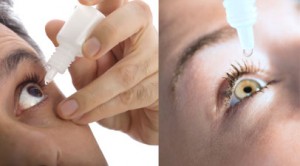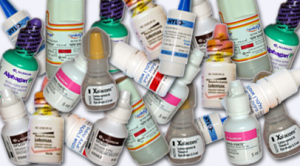Until about twenty years ago the treatment of glaucoma was viewed by the ophthalmologist as having a single aim – the reduction of intraocular pressure to a value of
21 or less. Doctors and patients believed that an eye with an intraocular pressure of 23 suffered from glaucoma and an eye with a pressure of 20 was healthy.Numerous studies done in the last 20 years proved beyond a doubt that this approach is incorrect. These studies showed that different eyes are affected by glaucoma at different pressures. By glaucoma we no longer mean high intraocular pressure, but rather damage to the visual field and optic nerve. For instance, particularly strong, “resistant” eyes can handle high intraocular pressure, even values of 25-30, and never develop damage characteristic to glaucoma. In these “especially strong” eyes, glaucoma did not develop even after high pressures persisted for periods as long as ten and even twenty years. It is important to note that such resistant, strong, eyes are relatively uncommon. On the other hand, there are eyes many that even with exposure to pressures in the normal range (such as 15-20) may develop characteristic damage to the optic nerve and the visual field.
These observations teach us that every eye has a “target value”, over which the eye may suffer damage. As long as the intraocular pressure remains below this value, glaucoma will not develop (or existing glaucoma will not progress). However, when the ocular pressure rises above this target value there is a risk of glaucoma emerging or deteriorating. To further complicate the picture it must be noted that the “target value” is not fixed throughout a person’s life and has a tendency to decrease with increasing age and as the damage from existing glaucoma becomes more severe. For example: A thirty year old person’s target value might be 28, while a 74 year old patient with end-stage glaucoma will need to maintain values between 10-14 in order to stabilize the disease as much as possible.
If so, what is the treatment goal in glaucoma? My answer is divided into a number of stages: Firstly, it is necessary to diagnose whether glaucoma exists or if the patient is classified as a glaucoma suspect. Secondly, it is necessary to estimate, based on all of the risk factors and of course on an eye-examination, what might be a reasonable target value of each particular eye. Thirdly, it is necessary to provide treatment which will lead to a decrease in intraocular pressure. Over the years, stable glaucoma patients continue to undergo routine pressure measurements, inspection of the optic nerve and visual field. As soon as the ophthalmologist discerns changes in the visual field, the optic nerve or a consistent rise in intraocular pressure, he will likely decide that the “target value” must be decreased and glaucoma treatment increased.
As you’ve learned, treating glaucoma is an individualized process. There is no such thing as “one treatment fits all”, but rather, each eye of each patient, at each point in time, receives individualized attention and treatment based on a decision process which takes into account the patient, the risk factors, the current pressure and findings that reflect the amount of damage that has already taken place.


